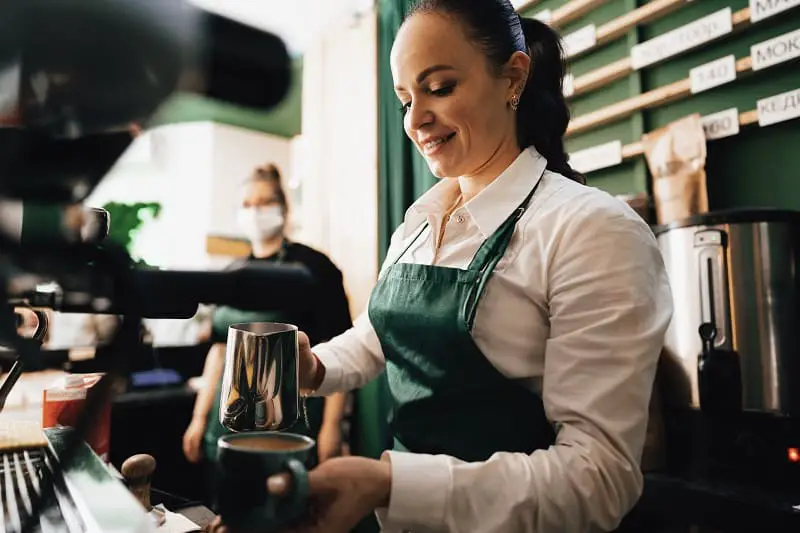Starbucks, the world’s largest coffeehouse chain, is synonymous with premium coffee and a comfortable café experience. With over 33,000 stores in 80 countries, Starbucks has become a global phenomenon, offering a consistent menu with a local twist. However, the price of a Starbucks coffee can vary significantly from one country to another due to factors such as the local cost of living, taxes, import duties, and the economic conditions of each region. In this post, we’ll explore the factors that influence Starbucks coffee prices across the globe and take a closer look at how these prices differ in various countries.

Why Starbucks Prices Vary Around the World
The price of a Starbucks coffee is not uniform across the globe, and several factors contribute to this variation:
- Cost of Living: One of the most significant factors is the local cost of living. In countries with a higher cost of living, like Switzerland or Norway, Starbucks prices are typically higher. Conversely, in countries with a lower cost of living, such as India or Thailand, prices are generally lower.
- Local Taxes and Import Duties: Taxes, including VAT or sales tax, and import duties on coffee beans and other ingredients, can significantly affect the final price of a Starbucks beverage. Countries with higher taxes will see these costs passed on to the consumer.
- Currency Exchange Rates: Fluctuations in currency exchange rates can also impact prices, especially in countries where Starbucks imports a significant portion of its ingredients. A weaker local currency can lead to higher prices for imported goods, including coffee.
- Labor Costs: The cost of labor is another critical factor. In countries where wages are higher, such as in many European nations, the price of coffee reflects these labor costs. On the other hand, in countries where wages are lower, the prices tend to be more affordable.
- Operational Costs: Rent, utilities, and other operational expenses vary widely across different regions and cities. Starbucks stores in prime urban locations with high rent costs will often charge more for their coffee to offset these expenses.
Starbucks Coffee Prices: A Country-by-Country Comparison
Let’s take a closer look at the average price of a “Tall” (12 oz) Caffè Latte, one of Starbucks’ most popular drinks, in various countries around the world. Please note that prices are approximate and can vary slightly depending on the city and specific store.
- United States
- Average Price: $3.95
- The US, Starbucks’ home country, offers relatively affordable prices compared to other developed nations. The pricing is influenced by the competitive market and the high volume of sales.
- Canada
- Average Price: CAD 4.25 (~USD 3.20)
- In Canada, Starbucks prices are comparable to those in the US, though slightly lower when converted to USD. The cost is influenced by the similar economic environment and consumer expectations.
- United Kingdom
- Average Price: £2.75 (~USD 3.50)
- In the UK, Starbucks prices are slightly higher than in the US, partly due to higher VAT and operational costs in the densely populated cities where most Starbucks outlets are located.
- Switzerland
- Average Price: CHF 5.50 (~USD 6.00)
- Switzerland has some of the highest Starbucks prices in the world. The high cost of living, strong Swiss franc, and high wages contribute to these elevated prices.
- Australia
- Average Price: AUD 4.50 (~USD 3.00)
- Starbucks is not as dominant in Australia, facing stiff competition from local coffee shops. Prices are moderate, reflecting the competitive market and local preferences for coffee.
- Japan
- Average Price: ¥400 (~USD 3.50)
- Starbucks is extremely popular in Japan, with prices slightly higher than in the US. The cost is influenced by high operational costs in urban areas and the premium positioning of the brand.
- Brazil
- Average Price: BRL 14.00 (~USD 2.70)
- Despite being a major coffee-producing country, Starbucks prices in Brazil are relatively low in USD terms. This reflects the local cost of living and currency exchange rates.
- India
- Average Price: ₹220 (~USD 2.70)
- Starbucks in India prices its coffee lower than in many Western countries, aligning with local income levels. The chain has also adapted its offerings to cater to Indian tastes, which affects pricing.
- China
- Average Price: ¥30 (~USD 4.50)
- Starbucks in China is positioned as a premium brand, and prices are higher than in many other Asian countries. The brand’s prestige, coupled with high urban costs, drives up prices.
- Russia
- Average Price: ₽300 (~USD 4.00)
- In Russia, Starbucks coffee is considered a luxury, and prices reflect the brand’s premium status. The cost is influenced by import duties and the fluctuating ruble.
- South Africa
- Average Price: ZAR 35 (~USD 2.00)
- In South Africa, Starbucks prices are lower than in many other countries, reflecting the local economic conditions and the competitive landscape.
- Turkey
- Average Price: ₺25 (~USD 1.50)
- Turkey has some of the lowest Starbucks prices in the world. The lower cost of living and competitive market contribute to these affordable prices.
The Global Starbucks Experience
Starbucks prices around the world provide an interesting snapshot of global economic conditions, local preferences, and the brand’s strategy in different markets. While the company strives to offer a consistent experience across all its locations, the price you pay for your favorite coffee can vary dramatically depending on where you are.
For travelers and expatriates, understanding these price differences can help manage expectations and budget accordingly. Whether you’re paying $6 for a latte in Switzerland or $1.50 in Turkey, the Starbucks experience remains a comforting constant in an ever-changing world.
